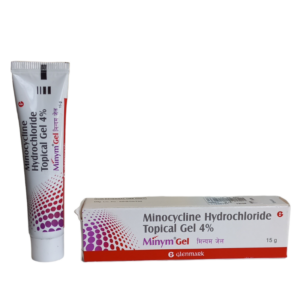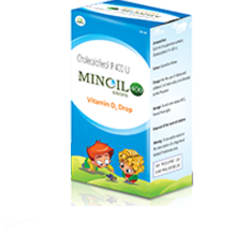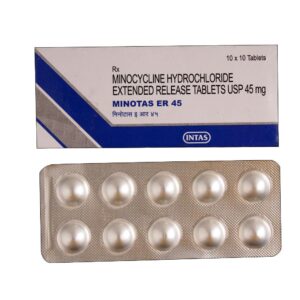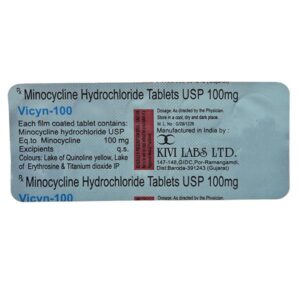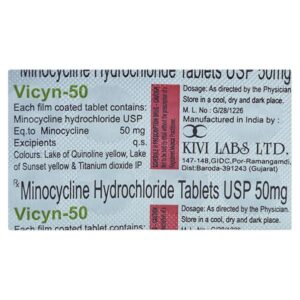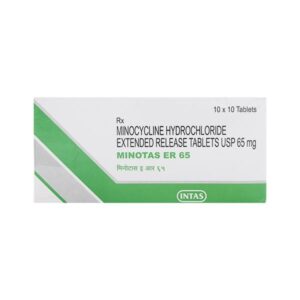MINOCYCLINE
MINOCYCLINE: Minocycline is an antibiotic medication that belongs to the tetracycline class of drugs. It is primarily used to treat various bacterial infections, such as respiratory tract infections, urinary tract infections, skin and soft tissue infections, and sexually transmitted diseases like gonorrhea.
The mechanism of action of minocycline involves inhibiting the growth of bacteria by preventing them from producing essential proteins needed for their survival. It does this by binding to the 30S ribosomal subunit of the bacterial ribosome, thereby blocking the attachment of aminoacyl-tRNA complexes.
The dosing of minocycline can vary depending on the specific infection being treated and the patient’s age and weight. However, the usual adult dose for most infections is 200 mg initially, followed by 100 mg every 12 hours. The medication is typically taken orally with a full glass of water, and it can be taken with or without food. It is important to follow the instructions provided by the healthcare professional or the drug’s label.
Like any medication, minocycline can cause side effects. Common side effects include gastrointestinal symptoms like nausea, vomiting, diarrhea, and abdominal pain. It may also cause dizziness, lightheadedness, or skin reactions such as rash or itching. Minocycline can also lead to more severe side effects, although they are relatively rare. These can include severe allergic reactions, liver problems, kidney damage, or blood disorders. It is important to promptly report any unusual or severe side effects to a healthcare professional.
Furthermore, minocycline may cause discoloration or staining of teeth in children under the age of 8 years or if taken during tooth development. It can also make oral contraceptives less effective, so alternative methods of contraception should be considered while taking this medication.
It is crucial to complete the full course of minocycline treatment as prescribed, even if symptoms improve, to ensure the eradication of the infection and minimize the development of antibiotic resistance. Always consult with a healthcare professional or pharmacist for appropriate use and any specific concerns or questions related to this drug.

